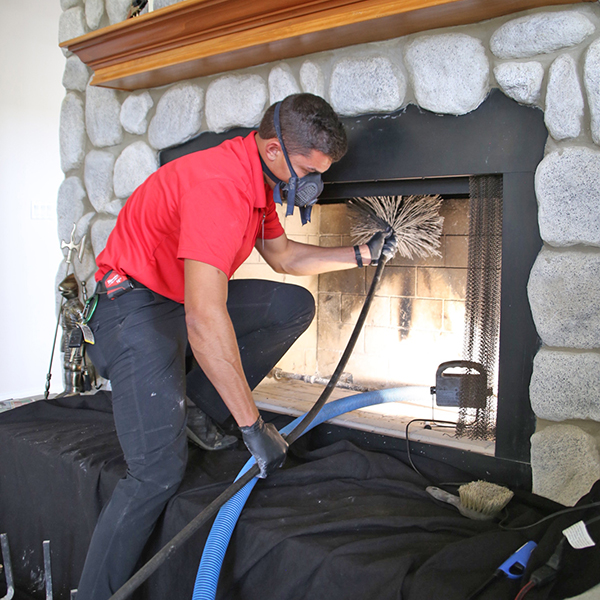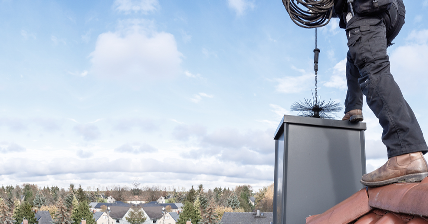Trustworthy Chimney Clean Company Fremont: Transforming Fire Places, One Clean at once
Trustworthy Chimney Clean Company Fremont: Transforming Fire Places, One Clean at once
Blog Article
Why Normal Smokeshaft Cleansing Is Important for Home Security
Regular smokeshaft cleansing is a frequently forgotten yet critical element of maintaining a protected and safe home atmosphere. While it might not be the most amazing or glamorous job on your order of business, overlooking chimney upkeep can have severe repercussions. The buildup of residue and creosote in your smokeshaft can position a significant fire threat, while inadequate ventilation can result in the possibly lethal threats of carbon monoxide poisoning. Normal chimney cleansing can help prolong the lifespan of your chimney, saving you from costly repairs or replacements down the line. How specifically does chimney cleansing add to home safety and security? Allow's check out the reasons behind this essential maintenance job and uncover the suggestions for appropriate chimney treatment that every homeowner need to understand.
Importance of Routine Smokeshaft Cleaning
Routine smokeshaft cleaning is vital for maintaining a risk-free and efficient home atmosphere. Over time, creosote, an extremely combustible compound, constructs up inside the smokeshaft (Chimney Clean Company Fremont). This deposit is a result of burning timber and can accumulate on the inner wall surfaces of the smokeshaft. If left unattended, it can position a significant fire risk. Normal cleaning removes this creosote accumulation and minimizes the threat of smokeshaft fires.
Along with avoiding fires, regular chimney cleaning also guarantees the effective operation of your furnace. When creosote collects, it limits the air movement via the smokeshaft, leading to poor combustion and decreased heating efficiency. This can result in higher energy bills as your heating unit works harder to keep the wanted temperature level. By on a regular basis cleaning up the chimney, you can enhance the air flow and make best use of the performance of your heating unit.
In addition, a tidy chimney advertises great indoor air top quality. As the smokeshaft becomes clogged with creosote and debris, it can prevent the appropriate venting of unsafe gases, such as carbon monoxide gas. These gases can seep right into your home, presenting a significant wellness danger to you and your family. Normal chimney cleansing guarantees that the air flow system is clear and functioning appropriately, stopping the buildup of hazardous gases.
Fire Danger: Accumulation of Residue and Creosote
The build-up of residue and creosote inside the smokeshaft poses a considerable fire threat, as it can stir up and cause a potentially destructive smokeshaft fire. It is composed of fine bits that can easily become air-borne and settle inside the smokeshaft. It is a result of insufficient burning and can stick to the internal walls of the chimney.
Both soot and creosote are extremely combustible. When a fire is lit in the fireplace or stove, the heat and flames rise the smokeshaft. If there is a substantial accumulation of residue or creosote, these compounds can create a smokeshaft and stir up fire. The intense heat created throughout a chimney fire can cause the smokeshaft to split or collapse, causing a prospective house fire. On top of that, the fires and stimulates from the chimney fire can run away with the chimney cap and stir up the roof covering or surrounding combustible products.

Routine smokeshaft cleaning is important to eliminate the buildup of residue and creosote and minimize the danger of a chimney fire. A specialist chimney sweeper will certainly utilize specialized brushes and devices to completely clean the smokeshaft, eliminating any gathered debris. By keeping the smokeshaft clean and cost-free from residue and creosote, property owners can make certain the risk-free and efficient procedure of their fireplace or oven, while also shielding their home from the risks of a smokeshaft fire.
Poor Ventilation and Carbon Monoxide Dangers
Insufficient air flow in smokeshafts can position significant dangers of carbon monoxide gas poisoning. Carbon monoxide (CARBON MONOXIDE) is an anemic, odor free gas that is generated when fuels such as gas, oil, or timber are burned. When smokeshafts are not properly aerated, carbon monoxide can develop and permeate into the space of a home, bring about potentially serious situations.
Among the major sources of bad smokeshaft ventilation is the build-up of particles, such as residue and creosote, which can block the flue and restrict the flow of air. This can cause insufficient combustion and the production of higher degrees of CO. In addition, a chimney that is sporadically cleansed can have a buildup of other obstructions, like bird nests or leaves, additional restraining the correct ventilation of damaging gases.
The impacts of carbon monoxide gas poisoning can be over here refined and conveniently misinterpreted for other illnesses, such as the flu. Signs may consist of migraines, wooziness, exhaustion, complication, and queasiness. Extended direct exposure to high degrees of carbon monoxide can lead to unconsciousness, body organ damage, and also fatality.
Normal smokeshaft cleaning and assessment are vital in preserving appropriate ventilation and reducing the risk of carbon monoxide gas poisoning. By getting rid of any type of obstructions and guaranteeing that the flue is clear, property owners can take pleasure in a healthy and balanced and risk-free living atmosphere. It is recommended to have actually smokeshafts examined and cleansed at the very least annually by a professional smokeshaft sweep to make certain optimum security and assurance.
Expanding the Life Expectancy of Your Chimney
To make certain Visit Website the durability of your chimney, correct maintenance and treatment are necessary. Regular smokeshaft cleaning is not just crucial for home safety yet likewise for expanding the life expectancy of your chimney. Gradually, soot, creosote, and particles can gather inside the chimney, bring about different concerns that can considerably decrease its lifespan.
One of the major advantages of regular chimney cleansing is the prevention of chimney fires. Creosote, a black, tar-like material formed by the insufficient combustion of wood, is highly flammable. Otherwise removed, it can develop inside the smokeshaft and fire up, triggering a possibly damaging and harmful smokeshaft fire. By routinely cleaning up the smokeshaft, you can eliminate this buildup and reduce the danger of a fire.
Furthermore, normal chimney cleaning additionally helps to avoid clogs. When debris, such as fallen leaves, branches, or also little animals' nests, obstruct the smokeshaft, it can impede correct ventilation and air flow.
In enhancement to preventing fires and obstructions, routine chimney cleaning can likewise recognize and address any kind of prospective damages or damage. By examining the chimney during the cleansing process, you can catch any kind of very early signs of cracks, leaks, or structural issues. Motivate fixings can be made to avoid more damage and extend the life-span of your chimney.
Tips for Correct Chimney Maintenance
For efficient chimney maintenance, it is essential to follow a few crucial pointers to guarantee the longevity and safety and security of your smokeshaft. These suggestions will not just help you preserve the efficiency of your smokeshaft yet likewise decrease the danger of smokeshaft fires and other potential threats.
Firstly, it is important to have your smokeshaft checked and cleansed by a professional smokeshaft sweep at least once a year. A professional will certainly be able to recognize any type of prospective concerns such as creosote build-up, animal nests, or architectural damages that can pose a threat to your smokeshaft's performance and safety and security.
In addition to yearly examinations, it is essential to on a regular basis examine and clean your chimney's flue and cap. The flue ought to be clear of any kind of debris or blockages that could restrict airflow or cause smoke to back up right into your home. The smokeshaft cap must be in excellent problem, safely connected, and without any kind of splits or damages to avoid undesirable guests such as birds or squirrels from entering your chimney.
Furthermore, it is important to make use of dry and skilled wood for burning in your fireplace. Damp or green wood produces even more smoke and creosote, resulting in a greater risk of smokeshaft fires. In addition, stay clear of melting materials such as trash, cardboard, or treated wood, as they can launch harmful chemicals and damage your chimney.
Last but not least, guarantee that your smokeshaft is geared up with a sturdy spark arrestor to stop triggers and embers from running away and possibly causing a fire. Chimney Clean Company Fremont.
Complying with these suggestions weblink for proper smokeshaft maintenance will certainly help make sure the safety and security and durability of your smokeshaft and offer peace of mind for you and your family.

Final Thought
In verdict, routine chimney cleaning is crucial for preserving home safety. By consistently cleaning and preserving your smokeshaft, you can expand its life expectancy and make sure the safety and security of your home and family members.

One of the main benefits of routine smokeshaft cleaning is the avoidance of chimney fires - Chimney Clean Company Fremont. The smokeshaft cap need to be in excellent condition, firmly affixed, and totally free of any kind of splits or damage to stop undesirable visitors such as birds or squirrels from entering your smokeshaft
Report this page